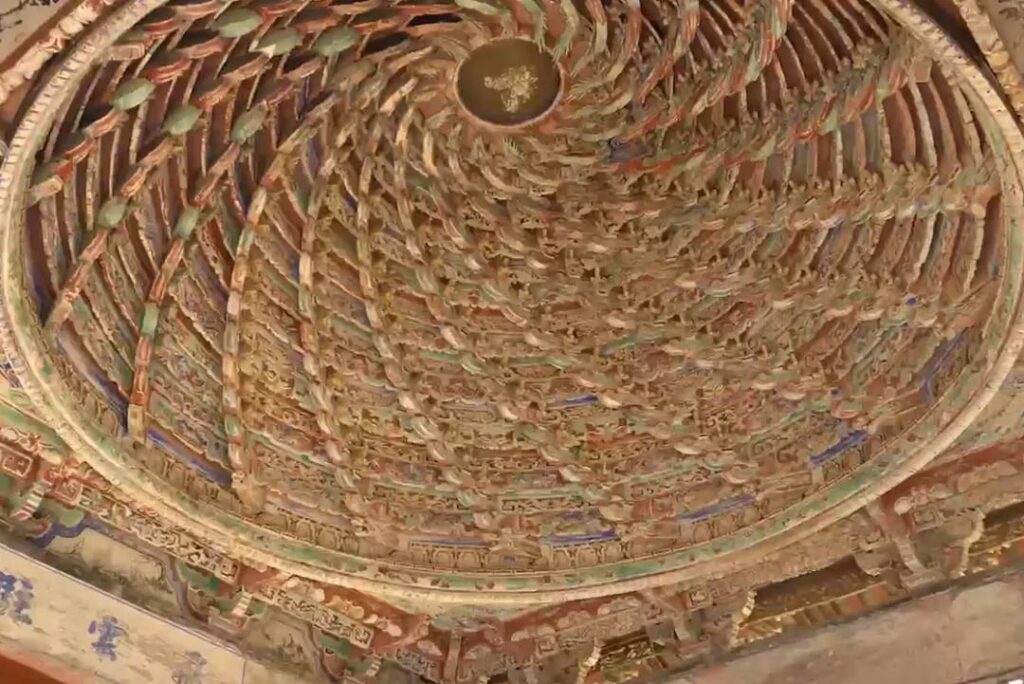
Zhejiang, facing the East China Sea in the east, has long been described as a land with “70% mountains, 10% waters and 20% fields”. A place with its particular soil and water nurtures unique humanity, natural environment and lifestyle.
Promo video
Lucid waters, lush mountains and ancient architecture in Zhejiang are as harmoniously blended as they are a natural match. Architecture of distinctive styles built on or near “mountains”, “seas”, “waters” and other landscapes reproduces the concomitant life philosophy of nature and locals in Zhejiang for thousands of years. Home, a sweet name cherished, comes in different ways. It can be walls and black tiles that lie on the south of the Yangtze River, the mansion of eminent families that live together for generations in central Zhejiang, the houses made of rammed earth in mountains, or stone ramparts built on the seaside.

【Meeting Under the Eaves】
Zhejiang, facing the East China Sea in the east, has long been described as a land with “70% mountains, 10% waters and 20% fields”. A place with its particular soil and water nurtures unique humanity, natural environment and lifestyle. Wang Shixing, a great traveler in the Ming Dynasty, wrote in his book Guang Zhi Yi (A Broad Description of Human Geography) that the “people of the waterborne kingdom” in Hangzhou-Jiaxing-Huzhou Plain lived an affluent and elegant life by trading in boats; the “people of mountains and valleys” in Jinhua, Quzhou, Yanzhou and Chuzhou were staunch and frugal in the fight against harsh geographical conditions; and the “people on the seashore” in Ningbo, Shaoxing, Taizhou and Wenzhou endured winds and rains, thus “officers and ordinary people were neither noble nor humble, neither luxurious nor austere”. Local dwellings are typical reflections of such cultural characters.


Ninghai Ancient Stages
【Living at the Sea】
Innumerable small fishing villages dot among mountains and along the winding coastline of the East China Sea. Locals build solid houses with rocks and stones in which the narrow stone windows can prevent moisture in the air, and roof stones are used for resisting typhoons. Fishermen either go for high sea fishing or for offshore acquaculture. Farmers live on farm land and rice land; fishermen live on the vast land of sea.

Changyu Quarry
【Water Towns in South of the Yangtze River】
The watery plain of Zhejiang is renowned as “land of fish and rice” and “home of silk”. The locals, with wisdom and diligence, have transformed nature into a 3-D eco-agriculture integrating sericulture, textile and fish culture. The Beijing-Hangzhou Grand Canal transported rice, silk and salt from the south to the other areas in China, so Hangzhou-Jiaxing-Huzhou Plain has become one of the richest regions in China. With a crisscrossed network of rivers, bridges and piers, most of the households are set along the rivers and boats are the most common means of transportation for locals.
 Nanxu Ancient Town
Nanxu Ancient Town
【Aristocratic Families】
In central Zhejiang lies the Jinhua-Quzhou Plain where the people toiled day after day but reaped little due to barren land. The densely populated area was home to the small families of clans that lived in close proximity to their ancestral halls in strict hierarchy. It took more effort to stand out from the densely populated and tightly-connected community in traditional society, so students studied diligently for being successful in imperial examinations, craftsmen learned hard to master skills, and merchants worked hard to accumulate wealth. In a sense, the people here turned this barren land into a livable place with picturesque mountains and rivers with their persistence and tenacity.

Lu’s Residence in Dongyang

Shijiazhuang Flower Hall (Parlour)
【Living in the Mountains】
The people in mountainous areas live on mountains. They paved ancient paths to turn enclosed mountains into convenient thoroughfares; they plowed steep slopes into terraced fields; they lived together in clans among beautiful landscape, planting mulberry and hemp, feeding chicken and dogs. Terraced fields, along the slopes, constitute a wonderful combination of lines and color blocks. The beauty of natural scenery is in a panoramic view.

Songyang Ancient Dwellings

Lounge Bridge
Click the link below to see the online
exhibitionhttp://www.cccstockholm.org/cloudExhibition/
Facebook: China Cultural Center in Stockholm
https://www.facebook.com/China-Cultural-Center-in-Stockholm-110983273921638
Instagram: chinaculturalcenterinstockholm
https://www.instagram.com/chinaculturalcenterinstockholm/
Youtube: China Cultural Center in Stockholm
https://www.youtube.com/channel/UCYqOYwuQtyTHC-iMNdfExsw
Tik Tok: cccinstockholm
@cccinstockholm
Address:
Västra Trädgårdsgatan 2, Stockholm
